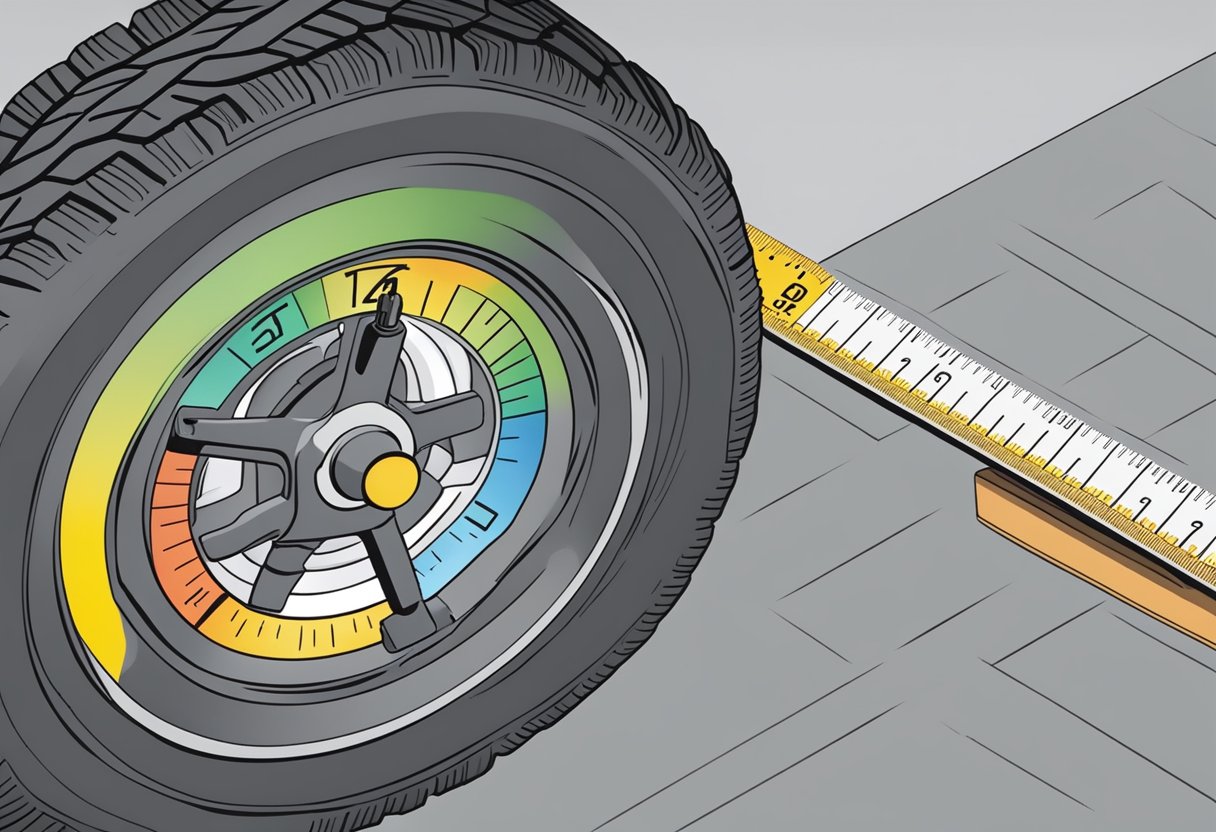
Inspecting and Measuring Tread Depth

Regular inspection of tire tread depth is essential for vehicle safety. Worn-out treads can reduce traction, making driving hazardous, especially on wet or icy surfaces.
There are several methods to measure tread depth. One common approach is the penny test. Insert a penny upside-down into the tire’s tread groove. If Lincoln’s head is visible, the tire needs replacement.
Tread depth gauges offer a more precise measurement. These tools can be found at automotive stores. Insert the gauge into the tread groove and read the measurement. Anything below 2/32 of an inch indicates it’s time to replace the tire.
Watch for uneven tread wear. This can indicate alignment issues or improper inflation. Regular inspection can catch these problems early, prolonging tire life and enhancing safety.
Proper tread depth not only provides better grip but also helps in maintaining fuel efficiency. Tires with adequate tread depth improve the overall driving experience and reduce the risk of accidents.
Selecting the Right Tires
Choosing the right tires for a vehicle is crucial for safety and performance. The first step is to check the vehicle manufacturer’s recommendations, usually found in the owner’s manual or on the driver’s side door jamb. These recommendations include the appropriate tire size, load capacity, and speed rating.
Tire size is indicated on the sidewall using a sequence of numbers and letters, such as 205/55R16. The first number represents the tire’s width in millimeters, the second is the aspect ratio, which is the height of the sidewall as a percentage of the width, and the R indicates radial construction. The final number is the wheel diameter in inches.
Another consideration is the tread pattern. All-season tires offer a balance of grip and longevity, making them suitable for most conditions. Winter tires feature specialized tread compounds and designs for enhanced traction on snow and ice. Performance tires prioritize grip and handling for sporty driving.
Load capacity and speed rating are also key factors. Each tire has a load index indicating the maximum weight it can support. The speed rating indicates the maximum speed the tire can safely sustain. Make sure these meet or exceed the vehicle’s requirements.
When replacing tires, it’s important to ensure they match the existing tires’ specifications unless an upgrade or change is needed. Mismatched tires can lead to handling issues and uneven wear.
Regularly inspecting tire sidewalls for damage or wear makes a difference in maintaining tire performance and safety. Selecting the right tires can enhance driving comfort, safety, and vehicle efficiency.
Handling a Flat Tire
Experiencing a flat tire while driving can be stressful. The first step is to remain calm and find a safe place to pull over. Activate your hazard lights to alert other drivers that you’re in distress.
Once parked safely, retrieve the spare tire and the necessary tools from your vehicle. These typically include a jack, a lug wrench, and sometimes wheel wedges. Place the wedges behind the wheels for safety, if available.
Begin by loosening the lug nuts slightly before jacking up the car. This prevents the wheel from spinning. Position the jack under the vehicle’s frame near the flat tire and lift the car until the tire is about six inches off the ground.
Fully remove the loosened lug nuts and take the flat tire off. Place the spare tire onto the hub, aligning the wheel studs with the holes in the spare.
Hand-tighten the lug nuts back onto the wheel studs. Once all lug nuts are in place, lower the vehicle back to the ground. Use the lug wrench to fully tighten the nuts in a star pattern to ensure even pressure.
It’s advisable to have the flat tire repaired or replaced as soon as possible. If comfortable doing this yourself, take the necessary precautions. Alternatively, roadside assistance can provide professional help to manage the situation efficiently.